Christos G. Tsinos
Ubiquitous Integrated Sensing and Communications for Massive MIMO LEO Satellite Systems
Jul 06, 2024



Abstract:The next sixth generation (6G) networks are envisioned to integrate sensing and communications in a single system, thus greatly improving spectrum utilization and reducing hardware costs. Low earth orbit (LEO) satellite communications combined with massive multiple-input multiple-output (MIMO) technology holds significant promise in offering ubiquitous and seamless connectivity with high data rates. Existing integrated sensing and communications (ISAC) studies mainly focus on terrestrial systems, while operating ISAC in massive MIMO LEO satellite systems is promising to provide high-capacity communication and flexible sensing ubiquitously. In this paper, we first give an overview of LEO satellite systems and ISAC and consider adopting ISAC in the massive MIMO LEO satellite systems. Then, the recent research advances are presented. A discussion on related challenges and key enabling technologies follows. Finally, we point out some open issues and promising research directions.
* 6 pages,4 figures
Integrated Communications and Localization for Massive MIMO LEO Satellite Systems
Mar 12, 2024Abstract:Integrated communications and localization (ICAL) will play an important part in future sixth generation (6G) networks for the realization of Internet of Everything (IoE) to support both global communications and seamless localization. Massive multiple-input multiple-output (MIMO) low earth orbit (LEO) satellite systems have great potential in providing wide coverage with enhanced gains, and thus are strong candidates for realizing ubiquitous ICAL. In this paper, we develop a wideband massive MIMO LEO satellite system to simultaneously support wireless communications and localization operations in the downlink. In particular, we first characterize the signal propagation properties and derive a localization performance bound. Based on these analyses, we focus on the hybrid analog/digital precoding design to achieve high communication capability and localization precision. Numerical results demonstrate that the proposed ICAL scheme supports both the wireless communication and localization operations for typical system setups.
Weighted MMSE Precoding for Constructive Interference Region
Oct 01, 2022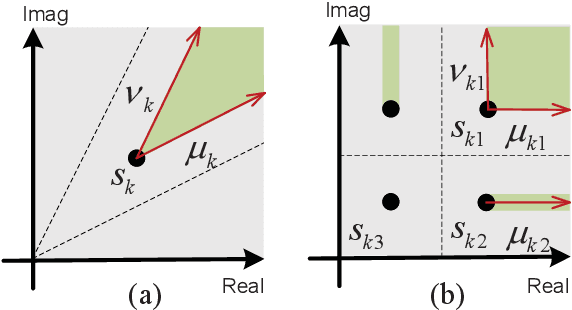
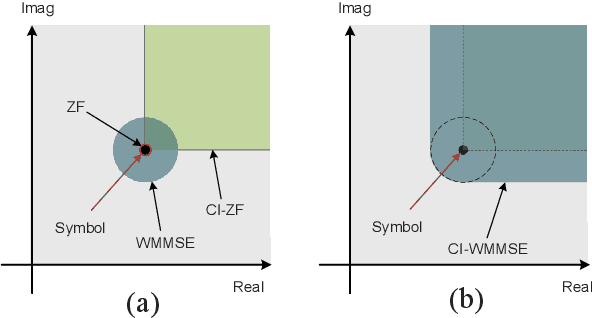
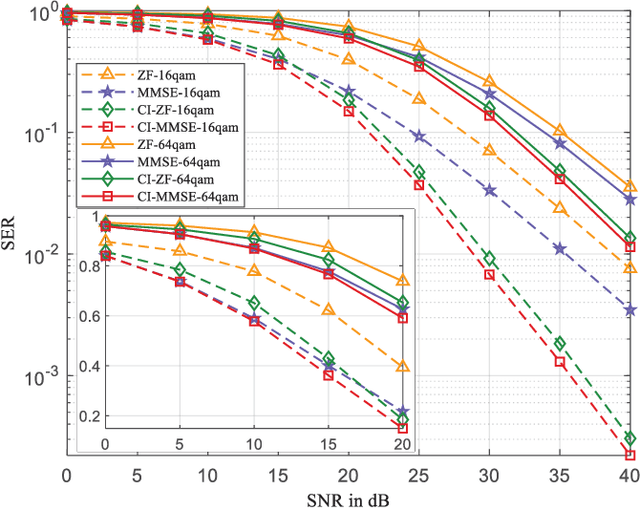
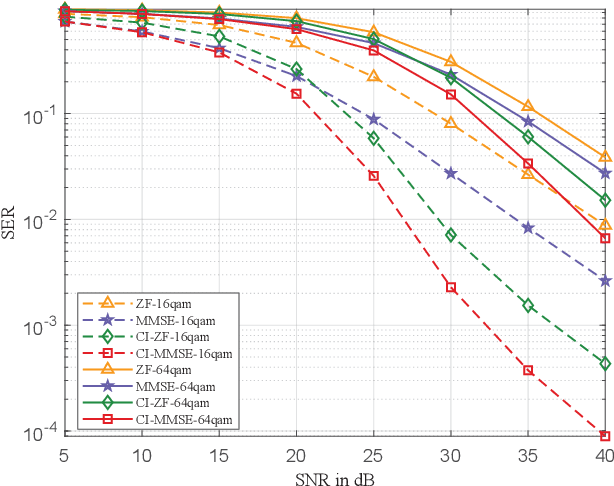
Abstract:In this paper, we propose a symbol-level precoding (SLP) design that aims to minimize the weighted mean square error between the received signal and the constellation point located in the constructive interference region (CIR). Unlike most existing SLP schemes that rely on channel state information (CSI) only, the proposed scheme exploits both CSI and the distribution information of the noise to achieve improved performance. We firstly propose a simple generic description of CIR that facilitates the subsequent SLP design. Such an objective can further be formulated as a nonnegative least squares (NNLS) problem, which can be solved efficiently by the active-set algorithm. Furthermore, the weighted minimum mean square error (WMMSE) precoding and the existing SLP can be easily verified as special cases of the proposed scheme. Finally, simulation results show that the proposed precoding outperforms the state-of-the-art SLP schemes in full signal-to-noise ratio ranges in both uncoded and coded systems without additional complexity over conventional SLP.
Massive MIMO Hybrid Precoding for LEO Satellite Communications With Twin-Resolution Phase Shifters and Nonlinear Power Amplifiers
Jun 09, 2022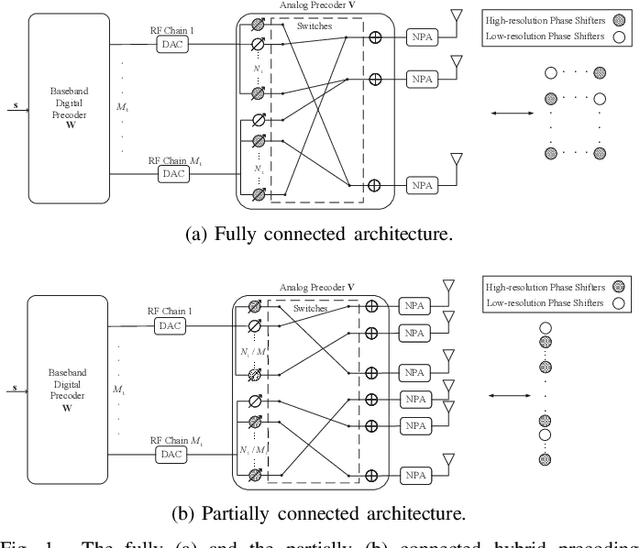
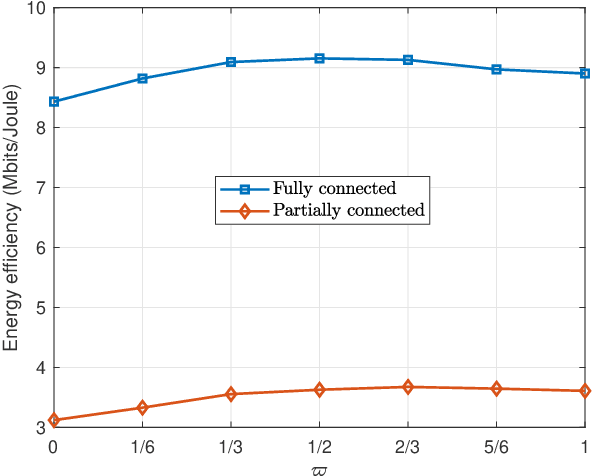
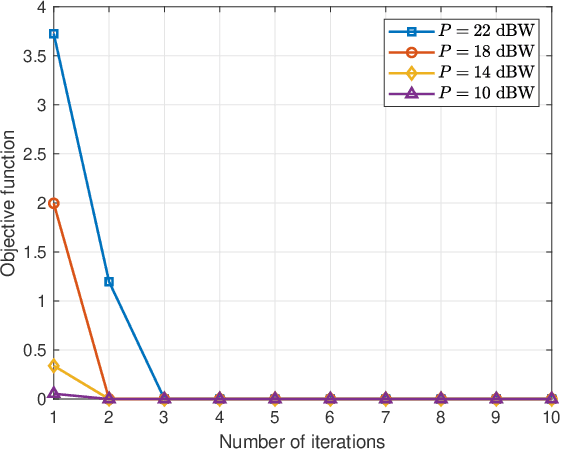
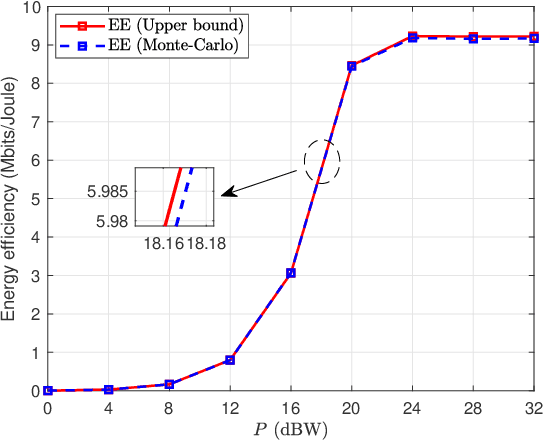
Abstract:The massive multiple-input multiple-output (MIMO) transmission technology has recently attracted much attention in the non-geostationary, e.g., low earth orbit (LEO) satellite communication (SATCOM) systems since it can significantly improve the energy efficiency (EE) and spectral efficiency. In this work, we develop a hybrid analog/digital precoding technique in the massive MIMO LEO SATCOM downlink, which reduces the onboard hardware complexity and power consumption. In the proposed scheme, the analog precoder is implemented via a more practical twin-resolution phase shifting (TRPS) network to make a meticulous tradeoff between the power consumption and array gain. In addition, we consider and study the impact of the distortion effect of the nonlinear power amplifiers (NPAs) in the system design. By jointly considering all the above factors, we propose an efficient algorithmic approach for the TRPS-based hybrid precoding problem with NPAs. Numerical results show the EE gains considering the nonlinear distortion and the performance superiority of the proposed TRPS-based hybrid precoding scheme over the baselines.
Beam Squint-Aware Integrated Sensing and Communications for Hybrid Massive MIMO LEO Satellite Systems
Mar 01, 2022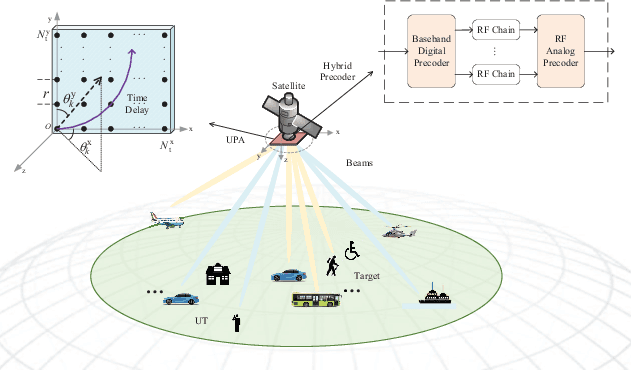
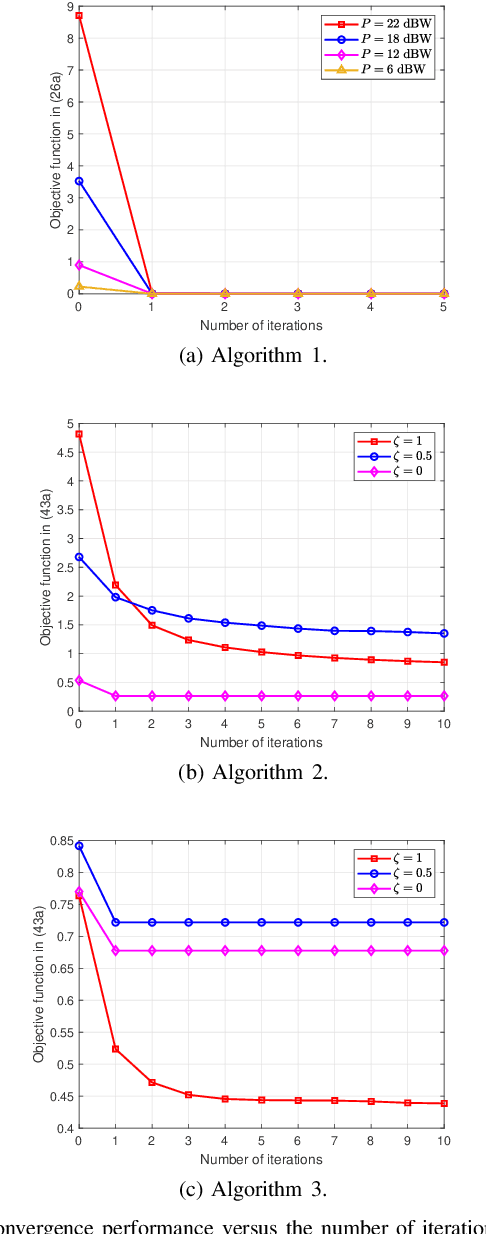
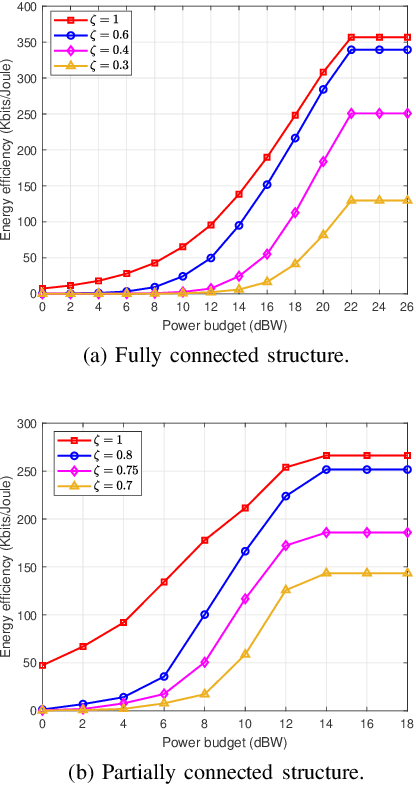
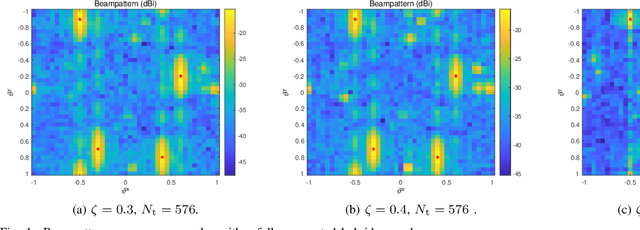
Abstract:The space-air-ground-sea integrated network (SAGSIN) plays an important role in offering global coverage. To improve the efficient utilization of spectral and hardware resources in the SAGSIN, integrated sensing and communications (ISAC) has drawn extensive attention. Most existing ISAC works focus on terrestrial networks and can not be straightforwardly applied in satellite systems due to the significantly different electromagnetic wave propagation properties. In this work, we investigate the application of ISAC in massive multiple-input multiple-output (MIMO) low earth orbit (LEO) satellite systems. We first characterize the statistical wave propagation properties by considering beam squint effects. Based on this analysis, we propose a beam squint-aware ISAC technique for hybrid analog/digital massive MIMO LEO satellite systems exploiting statistical channel state information. Simulation results demonstrate that the proposed scheme can operate both the wireless communications and the target sensing simultaneously with satisfactory performance, and the beam-squint effects can be efficiently mitigated with the proposed method in typical LEO satellite systems.
Hybrid Analog/Digital Precoding for Downlink Massive MIMO LEO Satellite Communications
Jan 17, 2022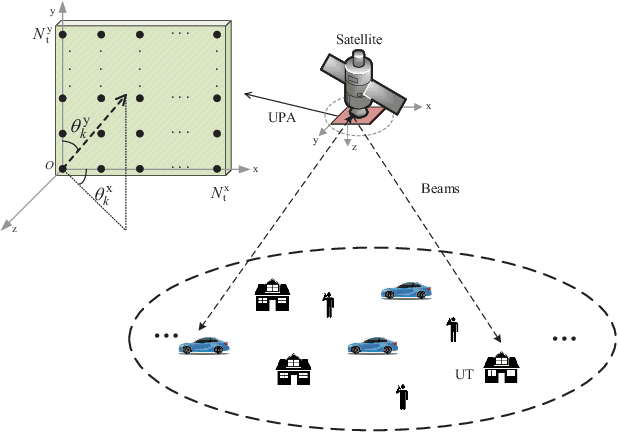
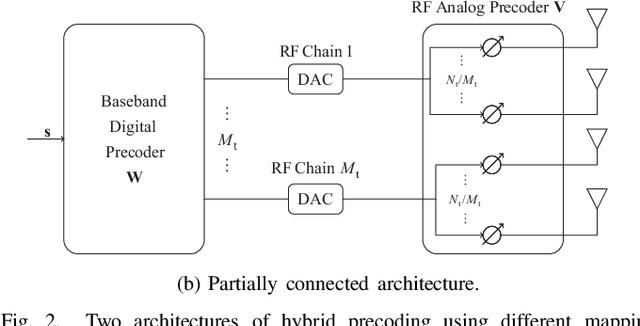
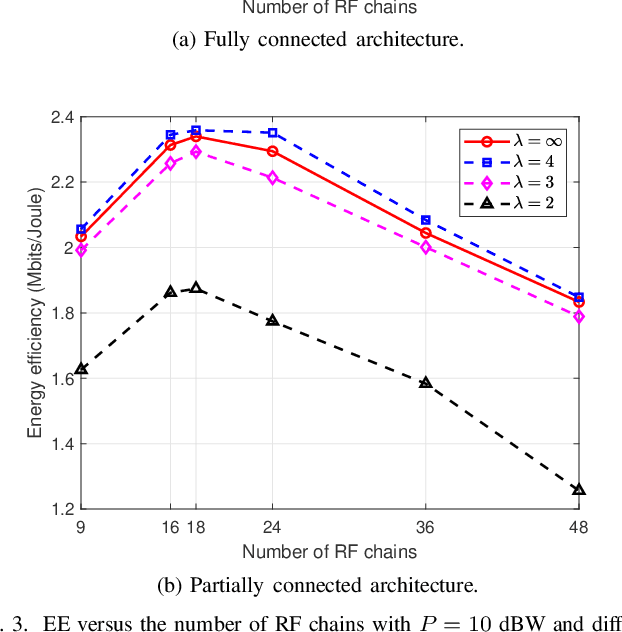
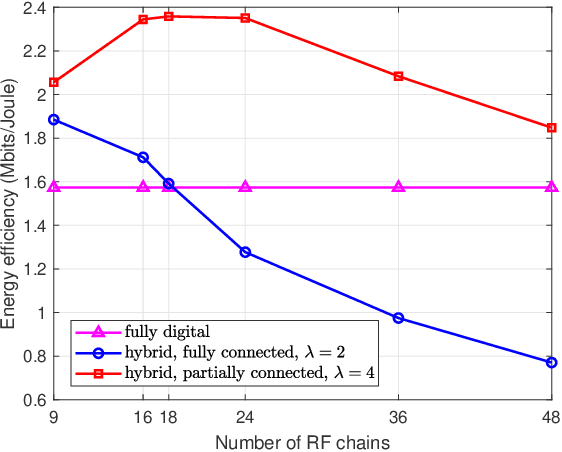
Abstract:Massive multiple-input multiple-output (MIMO) is promising for low earth orbit (LEO) satellite communications due to the potential in enhancing the spectral efficiency. However, the conventional fully digital precoding architectures might lead to high implementation complexity and energy consumption. In this paper, hybrid analog/digital precoding solutions are developed for the downlink operation in LEO massive MIMO satellite communications, by exploiting the slow-varying statistical channel state information (CSI) at the transmitter. First, we formulate the hybrid precoder design as an energy efficiency (EE) maximization problem by considering both the continuous and discrete phase shift networks for implementing the analog precoder. The cases of both the fully and the partially connected architectures are considered. Since the EE optimization problem is nonconvex, it is in general difficult to solve. To make the EE maximization problem tractable, we apply a closed-form tight upper bound to approximate the ergodic rate. Then, we develop an efficient algorithm to obtain the fully digital precoders. Based on which, we further develop two different efficient algorithmic solutions to compute the hybrid precoders for the fully and the partially connected architectures, respectively. Simulation results show that the proposed approaches achieve significant EE performance gains over the existing baselines, especially when the discrete phase shift network is employed for analog precoding.
 Add to Chrome
Add to Chrome Add to Firefox
Add to Firefox Add to Edge
Add to Edge